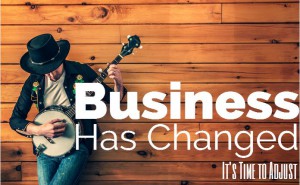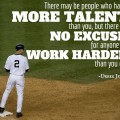 Imagine you are cooking dinner for a group of friends. You plan on making chicken Pad Thai, but you find out that one guest is allergic to peanuts and another is a vegetarian. What do you do?
Imagine you are cooking dinner for a group of friends. You plan on making chicken Pad Thai, but you find out that one guest is allergic to peanuts and another is a vegetarian. What do you do?
Unless you plan on watching a friend go into anaphylactic shock, chances are you would adjust your menu to accommodate the needs and preferences of your guests.
This may come as a shock, but people are unique. One-size-fits-all business practices make about as much sense as force-feeding peanut sauce to someone who is allergic to peanuts.
Many businesses are so resistant to change that they are inadvertently damaging their chances for success. Blindly holding onto outdated practices can hurt you.
It’s time to make some changes.
Ask Yourself “Why?”
It can be easy to follow along with things simply out of habit. Asking yourself why you do certain actions can be the first step toward improving them.
Take meetings, for example. A lot of professionals spend hours of their time in meetings. Though some meetings may be beneficial, spending hours of work time sitting in a room and discussing the same things over and over again can also be a colossal waste of time and resources.
So why schedule so many meetings? Why are they usually face-to-face instead of virtual? Asking these questions could point out redundant behavior and lead to much-needed changes.
Factor in Differences
For every person that thinks meetings are the bee’s knees, there is another person who is desperately tap, tap, tapping a pen against the table waiting for the hour to be up and eager to get back to work.
Preferences vary from person to person, but policies and procedures often favor only one style. Though pleasing everyone may not be possible, a little flexibility goes a long way.
Why should every person in a company have to do things the exact same way? Could flexibility make the workplace better and more profitable?
Consider traditional 9-5 schedules. Are they effective? Why?
If some people work better in the early morning and are able to really thrive at 5 a.m., does it make sense to have them wait four hours to begin their work day? For people who don’t really feel fully awake until noon, is it really beneficial to have them work three hours in a zombie-like state?
Providing a bit of flexibility could be the key to unlocking more productivity and better work, but you’ll never know if you refuse to entertain the idea.
Embrace Innovation
Compromise can make change a lot easier. For example, if a company still wants to hold meetings and have 9-5 work hours, allowing employees to work remotely, even if it’s just part-time, could work. Technology allows meetings to take place virtually and employees to stay in touch even when they are out of the office.
Embracing innovation can also help prevent your business from being left behind as the times change. In the 1990s when Blockbuster was the go-to place for movie rentals, the company had more than 9,000 stores. But as the needs of their customers shifted, they waited too late to make the changes they needed.
Blockbuster could have bought Netflix in 2005. Today Netflix is flourishing, creating original, Emmy-nominated programs while Blockbuster barely exists.
Don’t wait until your competitors make you irrelevant or your customers leave for greener pastures.
Taking college classes online used to sound like an impossible idea, but more than one in four students took online classes in the fall of 2012. Books have been printed for hundreds of years, and now people are reading on tablets and smartphones.
Making positive changes can help attract a wider variety of talent and customers. Refusing to make changes can make you obsolete.
The choice is yours. Make it the right one.
 Erin Palmer is a writer and editor who always supports workplace innovation. Her work has appeared in numerous publications and websites, including The Chicago Tribune and The Huffington Post.
Erin Palmer is a writer and editor who always supports workplace innovation. Her work has appeared in numerous publications and websites, including The Chicago Tribune and The Huffington Post.





